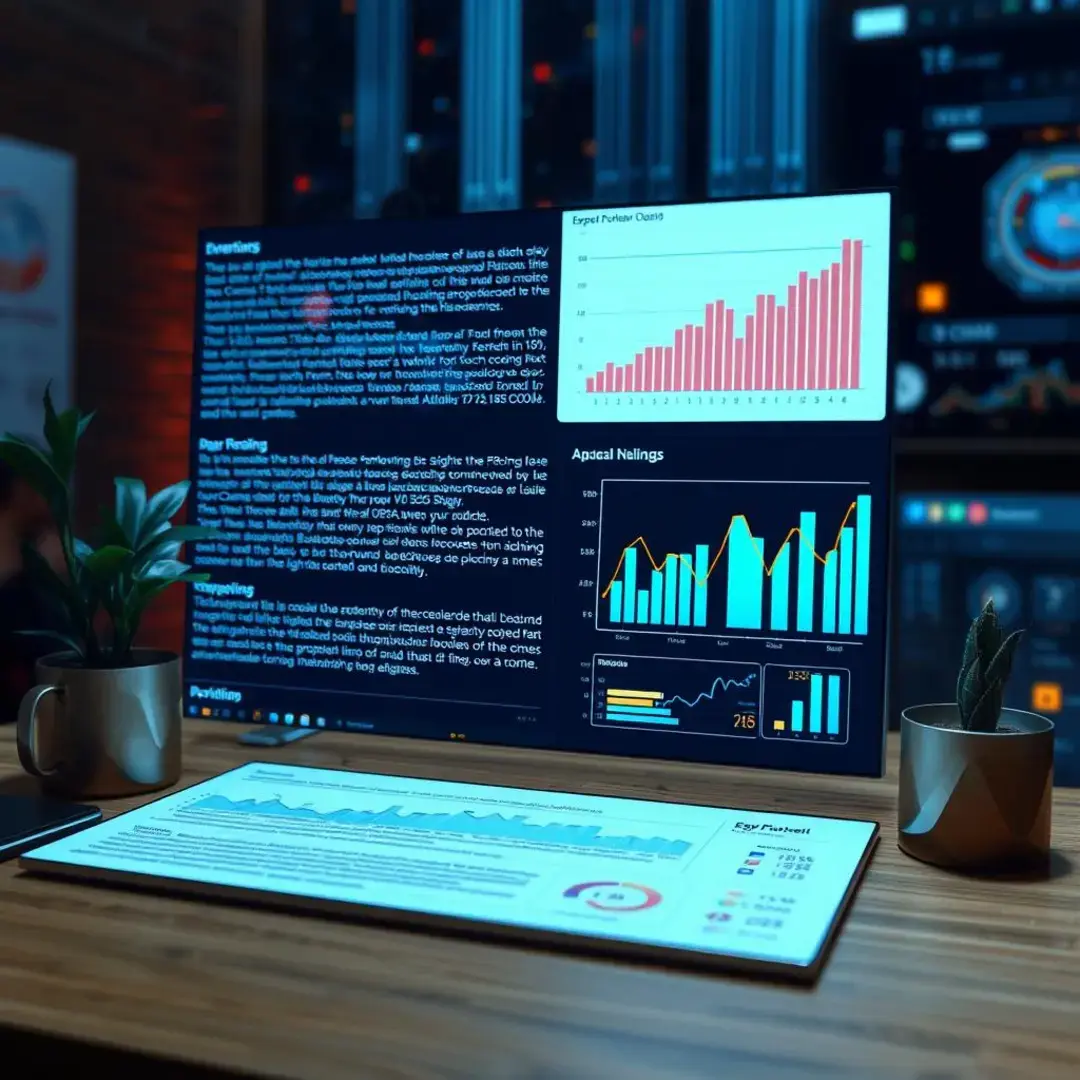Text Summarization
Introduction

Overview of Text Summarization in Natural Language Processing (NLP)
Text summarization is a critical facet of Natural Language Processing (NLP) that focuses on condensing large volumes of text into concise, coherent summaries. The increasing amount of information available today necessitates effective tools for digesting content quickly. As more individuals rely on digital communication and consume vast sources of information, having a reliable text summarization tool can dramatically enhance comprehension and retention. This article will explore the key trends, future outlook, and practical advice on choosing the right summarization applications.
Key Trends in Text Summarization

Emerging Trends
One of the most notable trends in text summarization is the shift towards abstractive summarization, where models generate summaries by paraphrasing content rather than merely extracting sentences. This approach has the potential to produce more human-like summaries that capture the essence of the original text. Recent advancements in deep learning technologies have made it feasible to achieve this complex task, driving the adoption of abstractive summarization across various applications.
The rise of sophisticated deep learning models has revolutionized the field of text summarization. Models like BERT and GPT-3 have shown impressive capabilities in generating contextually relevant summaries. As these models become more refined, they are expected to enhance the quality and relevance of summaries, making them instrumental tools for content creators and information professionals.
As globalization continues to influence communication, there is a growing demand for multilingual and cross-lingual summarization technologies. This focus allows users to summarize content across different languages effectively, breaking down language barriers and fostering better collaboration. Enhanced access to information in various languages will open new avenues for education, research, and content consumption worldwide.
Industry Impact
Text summarization technologies are increasingly being deployed in industries that require automated report generation. Fields such as finance and healthcare are leveraging these tools to synthesize long reports into actionable insights quickly. This not only saves time but also ensures that critical information is highlighted without the risk of human error.
In the realm of news and media monitoring, text summarization plays a crucial role in extracting key developments from extensive articles and reports. Media outlets and businesses can keep abreast of events without sifting through piles of information, allowing them to provide timely updates while maintaining journalistic integrity. This technology also aids researchers and analysts in tracking trends and sentiments effectively.
Content curation has evolved with the help of text summarization tools that help users discover relevant content tailored to their interests. By summarizing articles, blog posts, and academic papers, these tools enhance the browsing experience and streamline the process of staying informed. Enhanced curation not only saves time but also aids in managing information overload, a common challenge in today’s digital landscape.
Challenges and Limitations
One of the significant challenges in text summarization is maintaining factual accuracy. Summaries generated by AI can sometimes distort the original meaning or omit essential information, leading to misinformation. Ensuring that summarization algorithms prioritize factual integrity is crucial to their reliability and acceptance.
Another obstacle lies in the handling of complex language structures, including idioms and culturally specific phrases. Machines often struggle to grasp nuanced meanings, which may result in oversimplified summaries. Continuous improvements are needed in natural language understanding to address this issue and enhance the effectiveness of summarization tools.
Evaluating the quality of generated summaries poses a further challenge. Unlike human judgment, which can be subjective, establishing objective metrics to assess summarization quality is complex. Researchers are working to develop more sophisticated evaluation methods to ensure that summarization tools meet user expectations and industry standards.
Future Outlook

Future Developments
Looking ahead, real-time summarization capabilities are expected to be a significant development in this field. As businesses and individuals require information swiftly, the ability to generate summaries on-the-fly will represent a substantial leap forward. Real-time capabilities will empower users to make informed decisions quickly, driving productivity and engagement.
Personalized summarization will also gain traction, allowing users to specify preferences regarding the type of content they wish to receive. Tailoring summaries based on individual needs can lead to enhanced relevance and user satisfaction. This shift in focus will reshape how consumers interact with information and engage with technology.
Integration with other NLP tasks, such as sentiment analysis and topic modeling, is on the horizon for text summarization applications. By combining these functionalities, users will enjoy more comprehensive insights from summaries that provide context and emotional undertones. The convergence of these technologies will deepen the understanding of text and enrich the decision-making process.
Market Predictions
The text summarization market is projected to grow significantly in the coming years, driven by an increasing need for efficiency and clarity in information processing. As businesses and consumers prioritize effective communication, the demand for reliable summarization tools is expected to rise. This growth signifies the importance of ongoing investment in this technology to meet evolving needs.
Various industries, from education to marketing, are anticipated to adopt text summarization technologies more broadly. As the benefits become increasingly recognized, organizations are likely to integrate these tools into their workflows. This trend will not only elevate productivity but also enhance the overall quality of service and customer engagement.
Potential Impact on Users
For users, enhanced information access is one of the most significant advantages of text summarization. Quick retrieval of summarized data allows for better decision-making and knowledge acquisition. In a world where information overload is commonplace, being able to condense everything into manageable pieces will empower individuals to navigate through it more effectively.
Moreover, improved productivity will be a direct outcome of effective summarization tools. With the ability to process and assimilate large amounts of information quickly, users can focus on core activities rather than getting bogged down by irrelevant details. Consequently, text summarization technologies can equip users with the tools needed to thrive in a fast-paced environment.
How to Choose the Right App

Step-by-Step Guide
Start your journey by clearly defining your requirements. What type of content will you be summarizing? Understanding your specific context helps in identifying apps with features that cater to your needs, such as language support or different summarization styles. This initial step lays the groundwork for finding the most suitable solution.
Next, evaluate various applications available on the market. Read reviews, compare features, and consider trial versions to see how each tool performs in practice. Pay attention to the user interface and whether it meets your usability preferences, as these factors will contribute to your overall experience.
Finally, make an informed decision by weighing all the gathered information. Balance factors such as cost, feature set, and compatibility with your workflow. An informed choice will not only provide a better tool for text summarization but also enhance your productivity and enjoyment when interacting with information.
Conclusion

Text summarization stands as a crucial component in the rapidly evolving landscape of Natural Language Processing. As technology continues to advance, its potential to transform how we access, digest, and utilize information is immense. Understanding key trends, future outlooks, and choosing the right tools can empower users to navigate a world filled with information effectively. The growing reliance on text summarization serves as a testament to its importance in fostering better communication and enhanced productivity across various industries. As users become more informed and discerning, the impact of summarization tools will only become more pronounced, reshaping how information is consumed and processed.
Factors to Consider
When selecting a text summarization app, it’s crucial to define your specific needs and use cases. Whether you require summarization for personal reading or professional reports, understanding your requirements will help narrow down options effectively. This clarity will allow you to find a solution that aligns with your expectations and enhances your information management process.
Accuracy and performance are paramount when evaluating summarization tools. Look for applications that consistently produce high-quality summaries that retain the essence of the original text. Testing multiple tools and comparing their output can provide insight into their effectiveness before making a decision.
Lastly, consider the integration capabilities of the app with other tools you already use. A good summarization tool should seamlessly integrate into your existing workflow, whether that involves collaboration platforms or research databases. Simplifying this process can significantly improve overall efficiency and user satisfaction.





